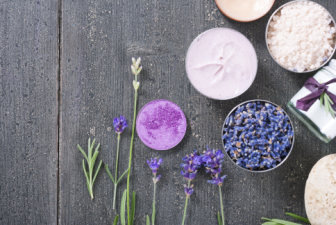The Future of the Health and Beauty Care Industry 12/17/2015
Imagine a world where you walk into a store and you are greeted by a robot. A robot that within the first second scans your face and immediately leads you to the perfect product that will solve your dry skin issues or reduce those fine lines and wrinkles.
Although we are not quite there yet, according to the Trends 2025 Beauty & Personal Care report conducted by Mintel Group Ltd. we are not far off from experiencing a retail venue like the one described above. In this report Mintel describes four trends that will reinvent the beauty category for consumers, manufacturers and retailers alike. The trends include:
- Technology
- Water
- Energy
- Natural Ingredients
Looking young is extremely important in today’s society. The idea of losing that youthful glow pushes people to try new tactics including technology that identifies which factors age skin along with systems that track skin changes from day to day, year to year. According to Mintel the demand for such technology is there as 48% of UK sun care users would be interested in an app that can be used to track changes in their skin or moles.
So what does this mean for the beauty care industry? For manufacturers, their products have to actually work. If consumers can track how their skin changes, products that hold empty promises will be quickly identified and weeded out as viable contenders.
The introduction of such technology will spark new apps and electronic devices that bridge the gap between the beauty and electronics categories. We’ve seen this happen before with the introduction of wearables into the fitness marketplace.
For retailers, it is essential that the shopping experience mirrors these developing technology trends. Innovative fixture solutions with built-in video and wi-fi capabilities will definitely be seen more often.
Water:
Water shortages are becoming more prevalent and consumers are not turning a blind eye to this dwindling resource. To help conserve, manufacturers will begin to move towards products that don’t require water during use, like dry-shampoos and non-rinse body washes. These new water-conscious products will broaden the category and open the door for immense product development and enhancement.
Manufacturers are also cutting back on the amount of water that is used as an ingredient in products because brands are finding that serum or oil based products are more effective than water-based. Additionally, this reduction helps to extend the product shelf life as mold and bacteria are slower to grow.
Energy:
Between full time jobs, managing a family and other daily responsibilities, consumers are pushed to their max. But according to Mintel, people are starting to fight back in two different ways. The first being naturally by getting more sleep, eating healthier and exercising. The second being with products that work to boost energy levels not just in the way that a consumers feels but also in the way that they look. According to Mintel Global New Product Database, facial skincare products featuring energy claims represented 12% of global launches between January and October of 2015, up 10.5% in 2014.
In terms of skin care, such energy boosting items use ingredients like panax, ginseng and coffee bean to re-energize skin for a vibrant glow. Like the waterless health and beauty care products, there is opportunity for energy boosting items to significantly deepen the category. But with developing technology, it will be easy for consumers to find out if the energy claims are legitimate or just false advertising.
Natural Ingredients:
The female millennial, can scroll through her Twitter feed, browse Pinterest or use another social platform and she is bound to come across ads promoting all-natural beauty products or some type of homemade remedy that can transform hair, skin or nails. Such homemade remedies will gain steam according to Mintel and will force manufacturers to sell ingredients separately rather than the finished product. This way consumers will be able to construct the product at home rather than simply purchasing the end result at the store.
Mintel describes this change by saying, “This will inspire beauty retailers to emulate supermarkets with aisles of natural ingredients in their raw and freeze-dried states.” This transformation will include refrigeration units and other fixture innovations to ensure that ingredients remain fresh while on the shelf which creates immense opportunities for fixture and merchandising suppliers.
Mintel’s Trends 2025 Beauty & Personal Care report dives deep into where the beauty category is headed and strategically analyzes the way that these future changes will impact the consumer packaged goods industry as a whole.
ECRM’s 2016 Health & Beauty Care Events:
- Cosmetics, Fragrance & Bath: January 17-21, 2016 at the Hyatt Regency New Orleans
- Skin, Bath, Cosmetics & Fragrances: June 5-8, 2016 at the Rosen Centre Hotel in Orlando, Florida
- Hair Care & Multicultural: June 6-9, 2016 at the Rosen Centre Hotel in Orlando, Florida
- International Health & Beauty Care: June 12-15, 2016 at the Grand Hyatt Tampa Bay in Tampa, Florida
If you would like to learn more about the upcoming ECRM Health and Beauty Care events, please contact Lisa Carrillo at 440-528-0427 or lisac@ECRM.MarketGate.com.
Other Content Gateway Articles That May Interest You:
- Product Showcase: Skin, Bath, Cosmetics & Fragrances
- Bulu Box Product Review Video: Pink Ice Energy Supplements
- Bundling Products to Boost Sales
Resources:
Trends 2025 Beauty & Personal Care. (2015). Retrieved from Mintel Group Ltd.

